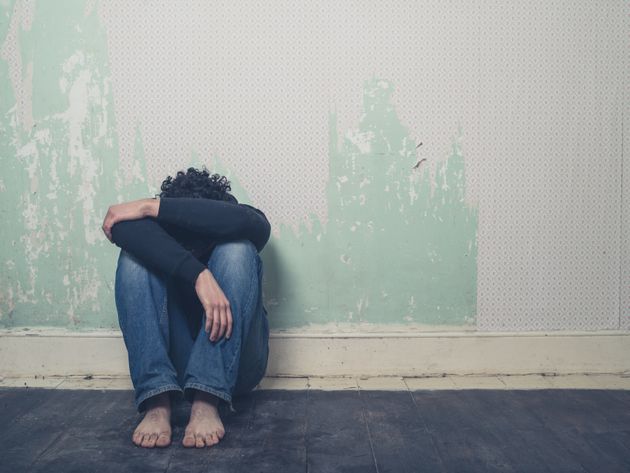Suicidal tendency on the rise
Suicidal tendency among youths is increasing in Malaysia. Based on the Malaysia Health and Morbidity Survey 2017, the trend among those aged between 13 and 17 had increased by 10 per cent in 2017 compared to 7.9 per cent in 2012.
Nov 22, 2019

Is social media to be blamed?
Suicidal tendency among youths is increasing in Malaysia. Based on the Malaysia Health and Morbidity Survey 2017, the trend among those aged between 13 and 17 had increased by 10 per cent in 2017 compared to 7.9 per cent in 2012.
The same study shows that the depression rate (among those in the age group) is 18.3 per cent, where one in five has depression; two in five, anxiety; and one in 10 suffer from stress according to the The Star Online (Oct 10, 2019).
Overconnected, and under pressure
Deacon Basil Ryan Balke is a licensed therapist at Mount Tabor Counselling in the Denver area, and the co-host of the podcast Catholic Psyche, which aims to educate people on the integration between the psychological sciences and Catholic spirituality, philosophy and theology.
Balke said that he thinks one of the driving factors of an increase in suicide among teens and young adults is their constant connectedness to the world through mobile devices, coupled with a lack of greater meaning in their lives.
“When I was in high school...I would go home, and I wouldn’t really have any contact with my friends unless I wanted it,” Balke said.
“And now with the saturation of the iPhone...you get the communication that is constantly there and constantly moving and so you can never unplug, and you can never continue on with life outside of the image you have to put out into the world (through social media),” he said. “
They’re always distracted, always moving forward. I was a youth minister for many years as well, and it was just — these kids never had a moment’s peace,” he added.
Tommy Tighe is a licensed marriage and family therapist in the Bay area in California, who also hosts a podcast on Catholicism and mental health called St Dymphna’s Playbook. Tighe said that despite having more connections, young people today are more isolated than ever.
“There’s so much more pressure...there’s so much more of a drive to be popular,” Tighe said, but social media connections often do not equate to “a close-knit community of close friends.”
The study found that students who reported using social media for two or more hours dai ly were more likely to poorly rate their own mental health, and experienced high levels of psychological distress and suicidal ideation.
“There’s a trend towards superficial relationships, and of course you don’t post on Instagram ‘I’m depressed’ or something like that, so I think people don’t know who to reach out to,” Tighe noted.
Furthermore, Balke said, “I think what is also happening is the younger people have lost meaning in their day-to-day lives as well. I think all of us have lost meaning as a force in our lives.”
Balke said especially for young people, there is an increasingly intense pressure to perform academically or athletically that has replaced the things that used to bring people a sense of greater purpose, such as faith or virtue or close familial connections.
The lingering stigma of mental health care
Another driving factor in the spike in suicides among young people and other populations is the lingering stigma of seeking out therapy or other mental health interventions, Tighe said.
“I think we try to act like we’ve really changed (as a society) in our perception of mental health, but I don't think that's really true,” Tighe said.
“Especially...it seems like every time there's one of these mass tragedies in our country, mental health gets brought up and I think that pushes people even further away from wanting to reach out or identify as having an issue,” he added.
Additionally, Tighe said, not only do young people today have a harder time making meaningful relationships with their peers, parents are also often afraid to broach the subject of suicide and mental health with their children.
“I'm hoping that the younger generation of parents will be a little bit more willing, but it's scary, right? That’s super scary to talk about.”
But talk about it parents must, Balke said, and the more specific they are, the better.
“You want to use that exact phrase: ‘Are you thinking about killing yourself?’ Or ‘Are you thinking about suicide?’ You don't want to use the phrase ‘self harm,’ or ‘Are you thinking about hurting yourself?’” he said. “You want to be very clear.”
Warning signs
Tommy Tighe said some of those warning signs include people who have been noticeably depressed for long periods of time, social withdrawal, talking about suicide or self-harm, or the giving away of prized possessions, among other things.
A warning sign that might seem strange, Tighe said, is when someone who has been depressed for a while is suddenly and inexplicably happy again.
“If someone’s been super depressed and then all of a sudden they’re sort of feeling really good...that makes us very nervous, because sometimes it’s because they’ve made the decision like, okay, on Friday, I’m going to do it. And they feel like a burden lifted off their shoulders, because there's an end in sight,” he said.
When those risk factors are spotted, those are the times to specifically ask people if they’re considering suicide, Tighe added. -- CNA







Total Comments:0